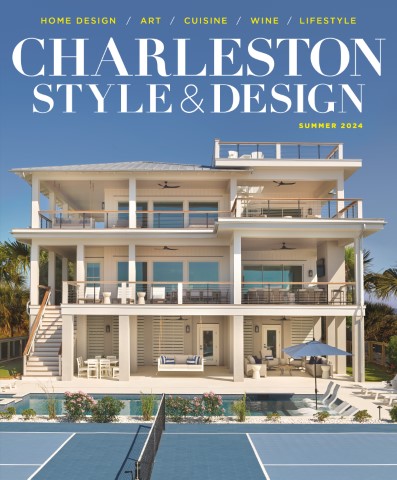The Lowcountry isn’t known for its clay. That’s a Piedmont thing. Around here we’re all about sand, shells and weathered wood. It’s an environmental palette that finds its way into our homes in building materials and interior design.
But did you know you can get brick—made from red clay—specially formulated to capture the shades, tones and colors of the beach?
You can. Bricks produced by Winston-Salem, North Carolina, brickmaker Pine Hall Brick come in colors with names like Oyster Pearl, Chesapeake Pearl and even Old Charleston.
Coastal colors in brick are as varied as the beach itself. Depending on the style, there’s pink, blue, tans and even some spots of black. Then there’s the texture. Brickmakers use a tumbling process to distress the edges and add subtle imperfections for a softer, timeless look.
Oyster Pearl is especially popular throughout the Carolinas. When you build with it on the coast, it couldn’t be more at home with the environment. Also, it’s a good long-term investment for a locale that’s prone to heat, humidity and hurricanes.
Architect Liz Baker worked with Daniel Island clients who wanted to build a home for the rest of their lives, and to achieve this they chose brick.
Baker, owner of Translations Design Studio based on Daniel Island, responded by designing an amazing 4,855-square-foot Lowcountry vernacular home using Oyster Pearl brick, which complies with building codes designed for FEMA’s velocity flood zones.
“If you’re looking for an all-brick home, it can be done in a velocity flood zone,” says Baker. “The only exception is FEMA requires a material that’s open between the brick piers so the water can flow through it. We painted the louvers a dark color, so they blend beautifully with the brick. We were also told by the municipalities that we could not have a brick staircase in a velocity zone. So, we designed the staircase so that it is open underneath and water can flow freely without obstruction. The owners were very happy to have a brick home despite their velocity zone.”
While the new home is built to accommodate seasonal flooding, it’s important to remember that brick is highly rated in impact tests, according to independent research by the Brick Industry Association. Flying storm debris is less likely to damage a brick home than homes built with other siding materials.
“Since the homeowners expected this to be the last home they built, durable, low-maintenance brick was an important consideration,” says Baker. Custom homebuilder Lee Blackman of Southeastern Custom Homes built the home and spearheaded the vendor selection. He and Baker worked with Jeff McEntire of Meridian Brick to specify the brick.
“We made the style and color selection in the Meridian showroom,” says Baker. “We weren’t looking for the real Georgian red colors. We wanted a brick that fit the environment.”
For a brick home of this size, Baker chose to avoid anything that might look too institutional. She wanted to specify something with a softer color and both cool and warm tones.
The finished project, like most Lowcountry vernacular homes, is influenced by the mix of European architecture of downtown Charleston. Those homes typically feature covered piazzas that were important socializing spaces before air conditioning, so Baker’s design has plenty of porch space.
The lighter brick color suits the bright sun and adds a modern touch to traditional Charleston architectural themes.
Not all of Baker’s homes are as expansive as this Daniel Island Oyster Pearl beauty, but brick is still important to her work around Greater Charleston.
“I especially love using brick for my steps,” says Baker. “Even if the budget doesn’t allow it to be used for the whole house or even the foundation, I love to use brick at a minimum on my front steps because it’s so durable and low-maintenance. The steps are where our humidity and sunlight are so intense, so over time, between the mold and mildew, the steps take a beating. With wood steps you have pressure wash and stain every six months, but with brick you don’t have to worry. It doesn’t matter what price point the home I’m doing is, I choose brick because it’s maintenance free.”
Baker’s designs demonstrate that brick is practical, code compliant and aesthetically appropriate for Lowcountry home designs.
—
David McLean is a Greensboro, North Carolina-based writer and the owner of King’s English.




